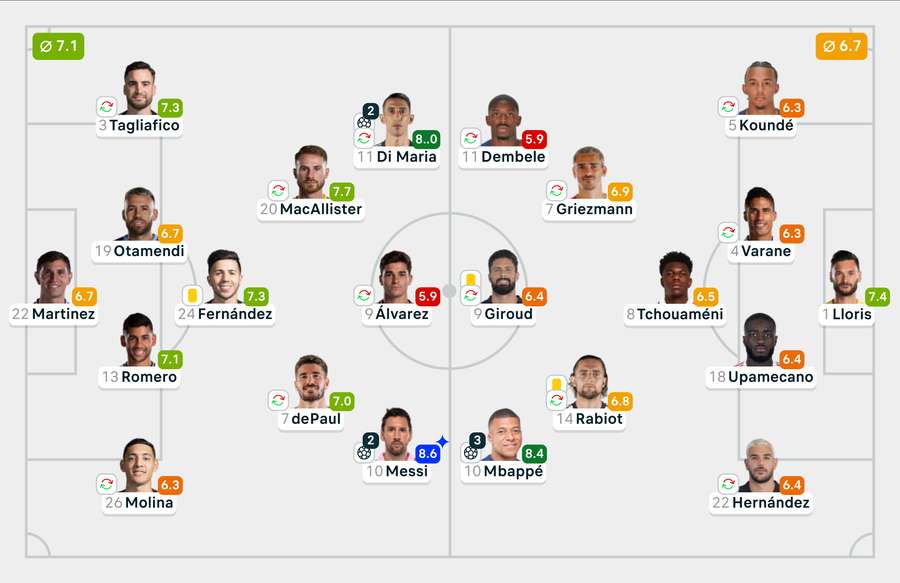The basic requirement for receiving a grade is that the player must spend at least ten minutes on the pitch, not including extra time. Each footballer automatically starts with a grade of six.
In the case of an absolutely extraordinary performance (e.g. Erling Haaland's five goals against Leipzig), the maximum is 10.
Grades are always calculated to one decimal place and appear in the match details directly in the line-ups tab a few minutes after the final whistle.

The final number will be mainly affected by individual statistics. Each of them has a certain value, which can be positive and add extra tenths (goals, shots on goal, successful passes, duels won, successful defensive tackles), but of course, it can also be negative - which in turn brings down the mark (fouls, cards received, duels lost).
Each position has its own tasks on the pitch, and logically different statistics are more essential for a goalkeeper than for a midfielder. The differentiation of positions is therefore one of the factors taken into consideration by the system.
The same applies to team statistics such as the number of shots on goal and the final result of the match.

You may be surprised to discover that a footballer in this rating system rarely ends up with an overall mark lower than the opening six. If they do, it usually indicates a truly extraordinary error: it means receiving a red card, causing a penalty or just a really poor performance full of errors.
The player ratings on Flashscore cover the first and second leagues in England, Germany, Spain, Italy, France, the Netherlands, Belgium and many other countries, as well as the Champions League, the Europa League, the Conference League and even the Copa Libertadores in South America.
Check out examples of the brand new system here from the World Cup final and Arsenal's recent win over Crystal Palace


